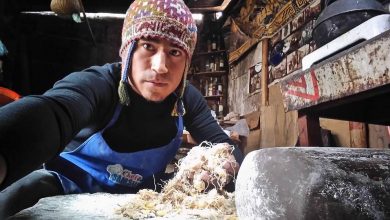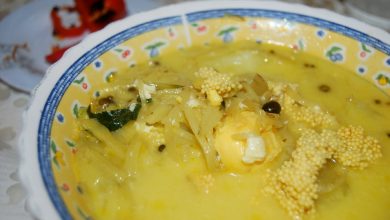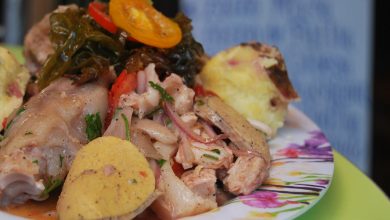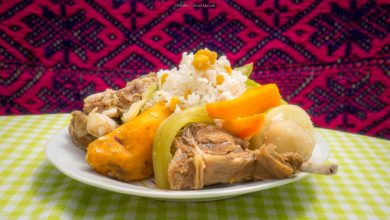The Divine Llajwa, a Marvelous Andean Sauce
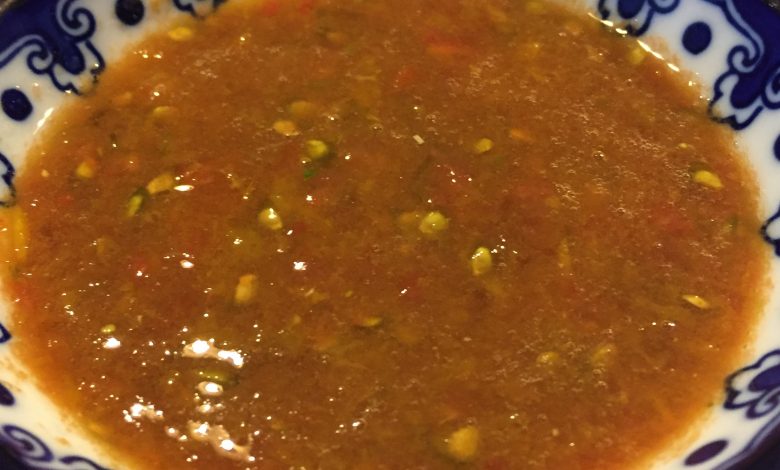
Simplicity can be the best. Sometimes you want complexity, lots of steps in a recipe and long lists of ingredients, though the simple when done with care, love, and precision, can outshine everything else.
I am talking about llajwa, the simple table sauce of the altiplano and Bolivian valleys. Found on almost every table it varies from cook to cook and day to day because it depends on two things: good ingredients and good technique.
Once you try it and get used to it, you will find it so amazing that the very idea of adding other ingredients or doing it in a lesser fashion does not please you. A good llajwa, also spelled llaqwa, or llajhua, is one of the amazing delights that not only makes a meal but also becomes a measure of everything else.
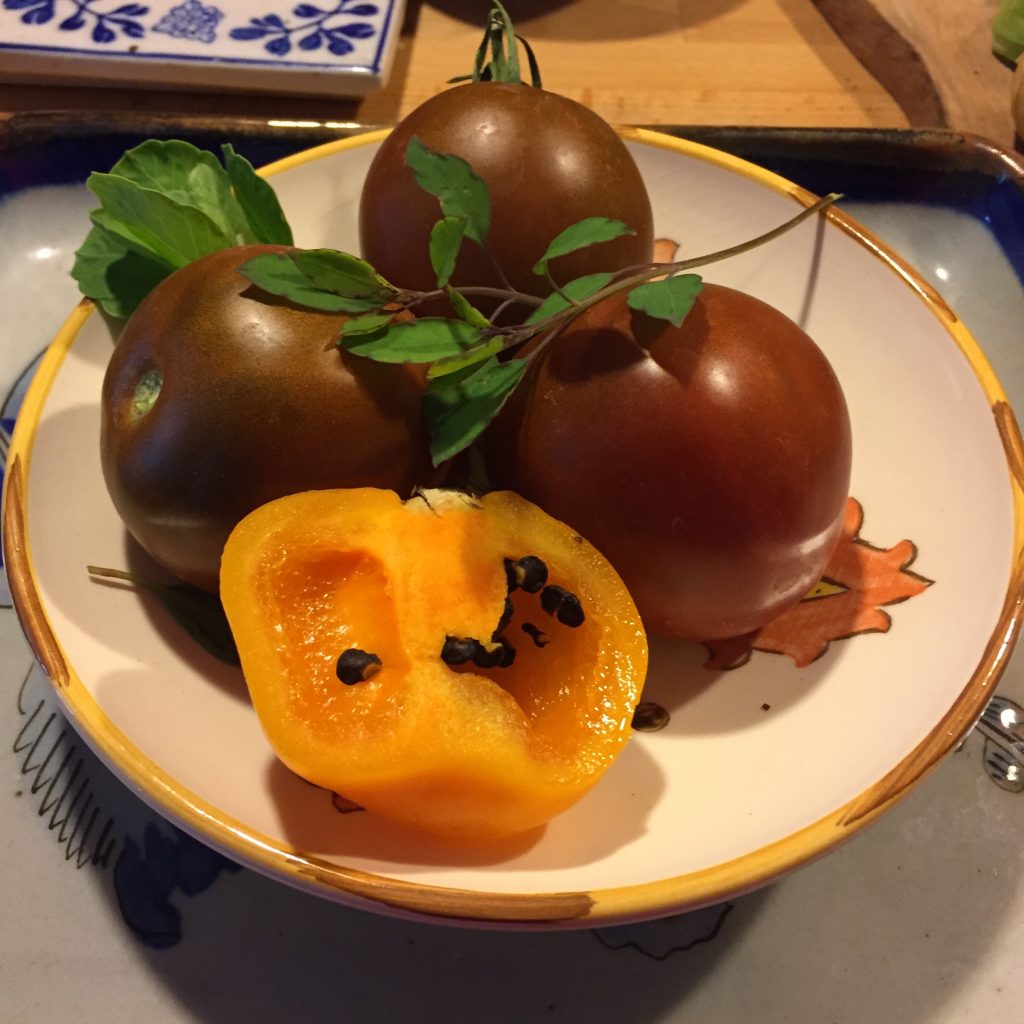
I first tasted llajwa in Oruro when I was nineteen and newly arrived to spend two years living in Bolivia. It was there, handmade on a batán, a traditional grinding stone, to eat with the soup, the necessary first course in this city that seemed so cold whenever you were out of the sun. I fell so in love with it I quickly began spreading it on my slices of marraqueta, a crunchy crusted bread often leaving little for the soup and had to ask for more, especially if I wanted some to use with the main course.
During those two years I lived in different parts of the country as well as two more later in La Paz, and many more visits of differing durations, I had llajwa almost every day. It is so common that it often passes uncommented and unseen.

Llajwa is a combination of a locoto (Peruvian:rocoto) a pepper the botanists label capsicum pubescens, that is usually very hot and has black seeds. This pepper is native to the upper jungle areas very near the highlands and many houses in lower areas of the highlands or near lack titicaca have towering locoto bushes growing in their patio from which they harvest the peppers they need. Others buy them in the markets.
Besides being hot, a locoto has a piney taste that gives great flavor to the resulting dish. People will discuss which are the best locotos, which vendor has them or where the best come from. They do vary substantially and, outside of the commercial farms in Arequipa, Peru, and to a lesser extent in Cusco, are not standardized. The cook’s choice of a good locoto is the first step in making a fantastic llajwa.
The next step is finding good tomatoes. This is not easy, because tomatoes do not grow in the highlands or even very close by. They grow in warmer valleys and must be trucked in, yet chilled tomatoes do not ripen well. As a result you want to find very flavorful tomatoes that are not filled with water but are packed with flavor, since they are key to this dish.
Though the tomato is indigenous to Bolivia and Peru, in fact wild ones grow all around, still it was domesticated in Meso America and only sometime after the conquest returned to the Andes.
These two ingredients are basic. Now you have to make a choice, how peppery or how tomatoey do you want the sauce. Finding that balance is tricky, especially since these two ingredients do not come in standard sizes.
Finally, though many people do not add it, you can choose to add an herb. The classic herb is quirquiña, also called quillquiña, or some variant. It is closely related to the Mexican herb pápalo, though its leaves are small and the pápalos are large, hence its name which refers to a butterfly. In either case these are quite pungent herbs and a little goes a long way.
The classic way to make a llajwa is to slice and seed the locoto, slice the tomatoes and then grind them finely by hand on a flat surfaced batán or on a different grinding surface. This makes the best sauce by far, because of the textures.
People talk about how different persons have different abilities in making the llajwa perfect. Many people today use a blender, though it produces a product that is suboptimal. Convenience often wins out and younger people forget the textures and quality of older styles of preparation. In any case, if using a blender—or better a food processor, be sure to blend in pulses to not end up with a foamy sauce.
The final ingredient is to find salt. Classically, in the Andes, salt comes from saleras, traditional areas of salt production such as Uyuni in Bolivia or Maras in Peru. You might wish to try different sea salts if you cannot obtain one of these.
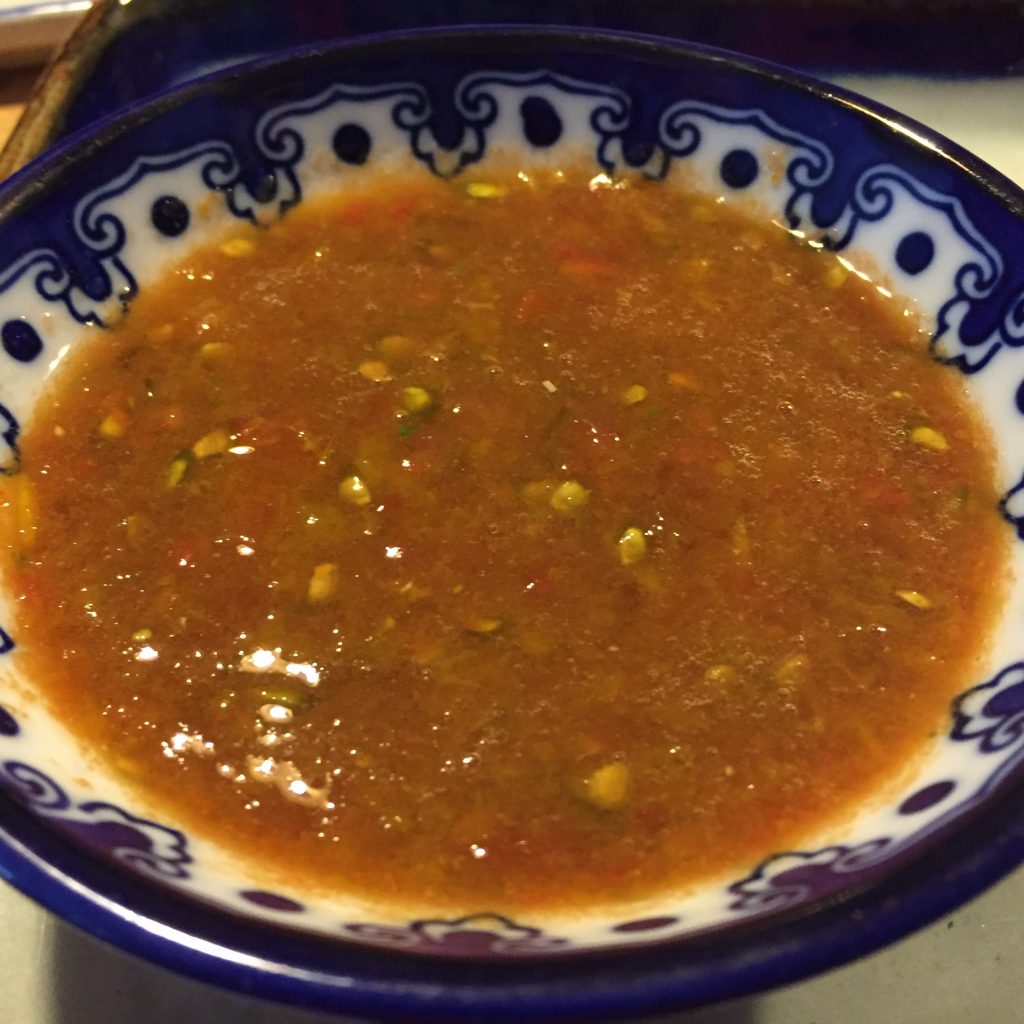
Here is the recipe for the llajwa I made up for the pictures.
3 medium sized dark heirloom tomatoes
(You want a full flavored tomato and the darker ones tend to have that deep rich flavor. If you do not have this, a good past tomato is a substitute but the flavor does not compare.)
2. 1/2 locoto
(I used a chile manzano from a Mexican market in the US since it is the same species as the Peruvian and Bolivia locotos / rocotos though not quit as piquant or as flavorful. Still it is the best option I have found in the US.)
3. a small sprig of quirquiña.
(I am fortunate to have this herb growing in my garden, although you can use pápalo that you can often buy fresh at Mexican markets or you can obtain the seed and grow yourself.)
Since I do not have a batán and do not want to use my blender, I carefully grind the pepper first in my mortar with a bit of the salt, before adding slices of the tomato and grinding well. I have to work in batches to assure the skin is ground well. I add the herb to the final grinding, carefully calculating how much of its flavor I want in the resulting product.
Of course you can use a food processor or blender but be very careful not to make the sauce foamy.
You can also grate the tomatoes–although you then lose the contribution of the flavor of the skin– and the locotos finely if you wish.
The result, if done carefully and well, is heavenly and is one of the great foods of the Andes.

